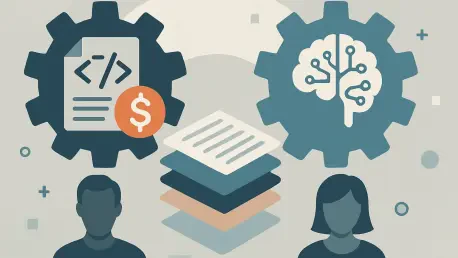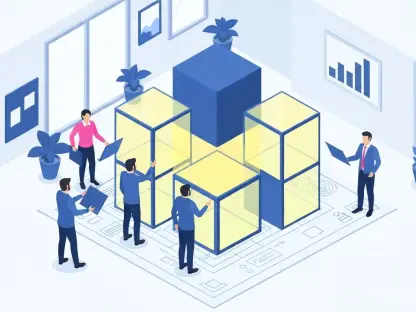I’m thrilled to sit down with Chloe Maraina, a trailblazer in Business Intelligence with a deep passion for weaving compelling visual stories through big data analysis. With her sharp expertise in data science and a forward-thinking vision for data management and integration, Chloe is the perfect guide to help us unpack the critical topic of technical debt and its impact on AI readiness. In this conversation, we dive into the hidden costs of legacy systems, the competitive disadvantages of inaction, and the transformative potential of modern data architectures. Join us as we explore why modernizing data warehouses isn’t just an option, but a strategic necessity for businesses aiming to thrive in an AI-driven world.
Can you explain what technical debt means when it comes to legacy data systems, and why it’s such a pressing concern?
Technical debt, in the context of legacy data systems, refers to the accumulated inefficiencies and limitations that come from sticking with outdated technology instead of upgrading to modern solutions. Think of it as the cost of shortcuts taken years ago—whether it’s old enterprise data warehouses or rigid architectures—that now hinder a company’s ability to adapt and innovate. It’s a pressing concern because in today’s fast-paced, AI-driven landscape, these systems can’t handle the scale, speed, or complexity required for modern analytics and machine learning. This debt isn’t just a tech issue; it’s a business risk that can erode competitiveness and profitability over time.
Why do you believe technical debt is becoming a bigger hurdle for companies looking to adopt AI?
The core issue is compatibility. AI and machine learning demand massive datasets, real-time processing, and scalable infrastructure—things legacy systems simply weren’t built for. These old data warehouses are often siloed and rigid, making it nearly impossible to train complex models or integrate with cutting-edge AI tools. As more companies recognize AI as a game-changer for everything from customer insights to operational efficiency, those stuck with technical debt find themselves unable to even start these initiatives. It’s not just about lagging behind; it’s about missing out on transformative opportunities while competitors surge ahead.
How does sticking with a legacy data warehouse impact a company’s ability to stay competitive in the market?
A legacy data warehouse acts like an anchor, slowing down every aspect of a business. It limits agility because data teams are bogged down with manual tasks and constant system patches instead of focusing on innovation. It also blocks the adoption of AI-driven strategies, like predictive analytics or personalized customer experiences, which are becoming table stakes in most industries. Competitors who’ve modernized can make faster, smarter decisions and capture market share, while companies tethered to old systems risk losing customers, revenue, and relevance. It’s a direct hit to their ability to compete.
What are some of the most obvious costs of maintaining a legacy data system that companies are already aware of?
The most visible costs are the ones that show up on the balance sheet year after year. High licensing fees for legacy software are a big one—these contracts are often locked in for multiple years and don’t scale well with data growth. Then there’s the maintenance expense, which includes mandatory vendor support that can be exorbitantly priced. On top of that, on-premise systems require hefty investments in hardware—servers, storage, networking gear—plus the ongoing costs of power, cooling, and physical space. These are the expenses CFOs see and grapple with regularly.
Can you dive into some of the hidden costs of legacy systems that might not be as apparent to business leaders?
Absolutely, the hidden costs are often more damaging because they’re not as easy to quantify. One major issue is productivity loss—data teams spend countless hours on manual tasks like tuning performance or fixing errors, time they could be using to build valuable insights or models. Then there’s integration challenges; connecting old systems to modern cloud tools or AI platforms is a nightmare, often turning into costly, drawn-out projects. Another hidden cost is security and compliance risks. Legacy systems lack the robust controls of newer platforms, exposing companies to potential breaches or fines that could be financially crippling. These costs don’t show up as line items, but they drain resources and stifle growth.
How does the struggle to integrate legacy systems with modern tools affect a company’s innovation and bottom line?
The struggle to integrate legacy systems with modern tools is like trying to fit a square peg into a round hole—it’s frustrating and expensive. Every new integration becomes a complex project, eating up time and budget that could be spent on innovation. This gridlock prevents companies from adopting cloud-based apps or AI services that could drive efficiency or uncover new revenue streams. The direct impact on the bottom line is twofold: you’re burning cash on failed or slow integrations, and you’re missing out on the competitive advantages that come from leveraging modern tech. It’s a double whammy of cost and lost opportunity.
What do you mean by the opportunity cost of not modernizing data systems, and why is it so critical?
Opportunity cost is the value of what you’re giving up by not acting—in this case, the benefits of AI initiatives and modern data platforms. Companies with legacy systems can’t launch projects like dynamic pricing, supply chain optimization, or personalized customer offerings because their infrastructure can’t support it. This translates to missed revenue, higher churn, and lost market share as competitors who’ve modernized pull ahead. It’s critical because this isn’t a future problem; it’s happening now. Every day you delay, you’re forgoing real business value and handing advantages to your rivals.
Can you walk us through how to calculate the True Cost of Inaction when it comes to legacy data systems?
Sure, the True Cost of Inaction, or TCI, is a framework that looks at the full financial impact of sticking with legacy systems. It’s broken into three parts. First, direct costs: add up annual licensing, maintenance fees, hardware, energy, and specialized labor expenses. Second, hidden costs: estimate productivity losses by calculating hours spent on manual tasks multiplied by hourly labor costs, plus potential financial risks like data breaches. Third, opportunity costs: project the revenue lift and cost savings from AI initiatives you’re unable to pursue. When you sum these up, the TCI often dwarfs the one-time expense of migration, making a compelling case for modernization as a strategic investment.
How do you see competitors gaining an edge by modernizing their data infrastructure while others hesitate?
Competitors who modernize gain a massive edge by unlocking the power of AI and real-time data. They’re able to analyze customer behavior instantly, optimize operations, and create new data-driven products or services. This means they can respond to market changes faster, reduce costs through automation, and win customer loyalty with tailored experiences. Meanwhile, companies hesitating to upgrade are stuck in a reactive mode, unable to innovate or even keep pace. The gap widens with every missed opportunity, and before long, it’s not just an edge—it’s a complete market domination.
What’s your forecast for the future of data modernization and AI readiness in the coming years?
I believe we’re at a tipping point where data modernization will become non-negotiable for survival. Over the next few years, I expect to see a surge in companies adopting cloud-native, AI-ready platforms as the cost of inaction becomes painfully clear. Automation will play a huge role in making migrations faster and less risky, bridging the gap that’s held many back. AI readiness won’t just be a competitive advantage; it’ll be the baseline for doing business. Companies that don’t adapt risk becoming relics, while those that embrace this shift will redefine industries with smarter, data-driven strategies.









